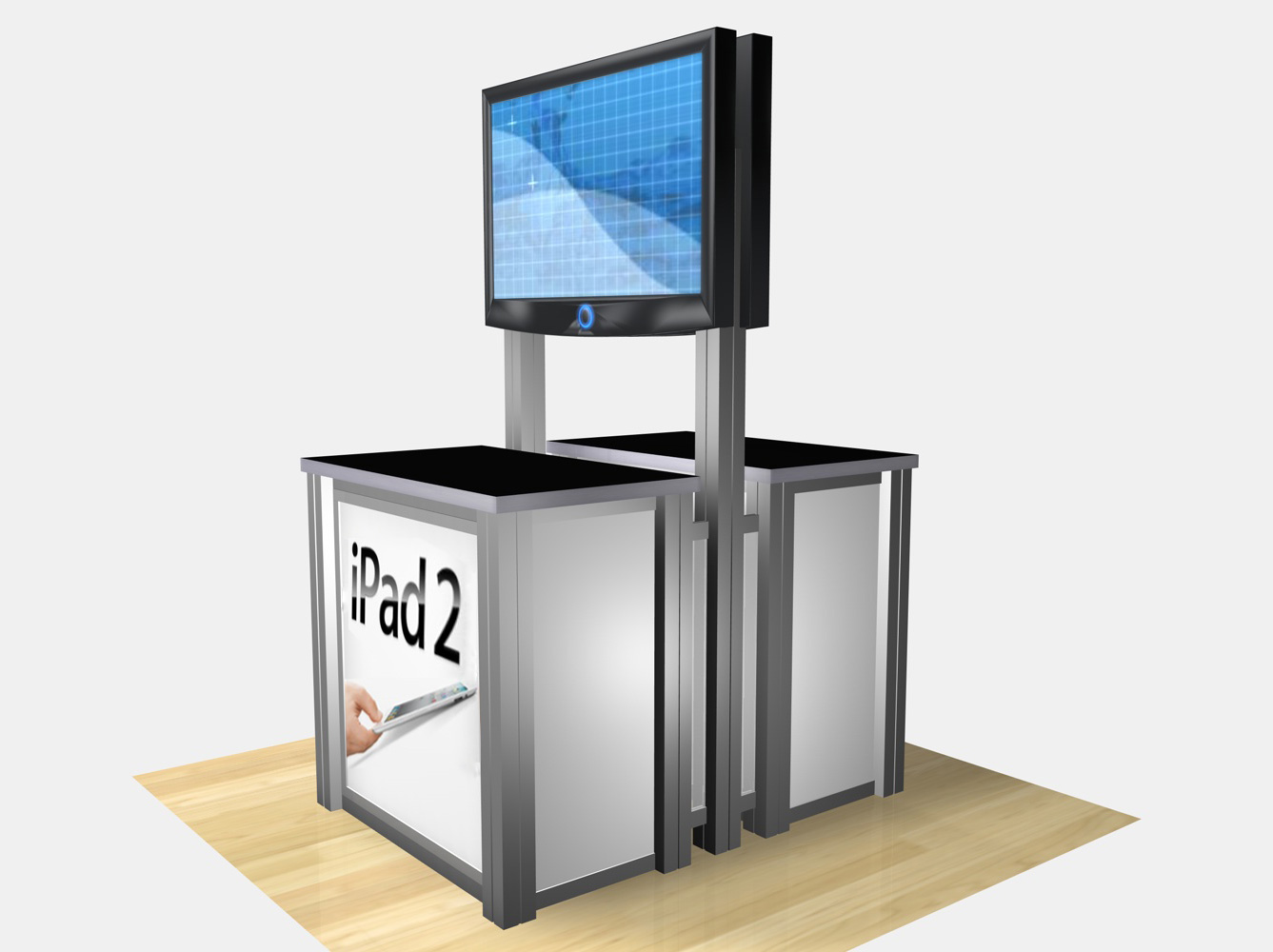Xhibit Design Search / Trade Show and Event Tips / Rental Displays /
Five Reasons NOT to Rent a Display
Five Reasons NOT to Rent a Trade Show Display

1. Change
Most companies devote considerable time, energy, and resources to the purchase of a new exhibit. And they should. Trade show marketing can be expensive, and getting it right requires choosing the right display and executing a comprehensive marketing strategy. Exhibitors work hard to get it right… at the first show. Then, many companies go on auto-pilot for several shows, or often for several years.
Renting a trade show display doesn’t change the planning phase. Most companies work just as hard for the first show, but because they know they can change the display (and most often do), they tend to revisit their strategy before every show. It may seem counter-intuitive, but exhibitors who rent are often more engaged in their trade show marketing program. They view the exhibit, the graphics, and their strategy as evolving depending on the show and/or their corporate goals.
2. Design and Ownership
.jpeg) Owning an exhibit has advantages, particularly for exhibitors who have a basic display or a very large customized exhibit. They get exactly what they want in a design or at a specific price point. For a high-end custom exhibit, there are no compromises. It will be built to their exact requirements. No questions. And, once built. It’s their property.
Owning an exhibit has advantages, particularly for exhibitors who have a basic display or a very large customized exhibit. They get exactly what they want in a design or at a specific price point. For a high-end custom exhibit, there are no compromises. It will be built to their exact requirements. No questions. And, once built. It’s their property.
However, most corporate exhibitors don't fit that model. They want a trade show experience that showcases their products or services and allows them to be successful on the show floor customers. The display has to be distinctive, captivating, and practical, but it doesn't have to be one-of-a-kind. Modern rental exhibits fulfill all those requirements because they can be customized to meet any look or experience.
3. Financial
Purchasing an exhibit is a considerable capital investment for most companies. They plan for it and put it in their budget. No problem. It’s a one-time expense every year or every couple of years which they depreciate over a fixed schedule.
Renting is generally less expensive. Exhibitors rent the structure and purchase the graphics. They have decided that owning the exhibit doesn’t make sense either because their trade show program is always changing or they’d rather budget it in stages.
4. Storage (and Storage Fees)
 Many exhibitors like having their trade show booth in their building or stored by their exhibit provider. They know what they have and where it is. They don’t mind devoting space to the exhibit in their office or paying monthly storage fees. There’s a certain peace-of-mind to knowing the exhibit is ready to ship at a moment’s notice.
Many exhibitors like having their trade show booth in their building or stored by their exhibit provider. They know what they have and where it is. They don’t mind devoting space to the exhibit in their office or paying monthly storage fees. There’s a certain peace-of-mind to knowing the exhibit is ready to ship at a moment’s notice.
Renting is exactly the opposite. The exhibitor doesn’t own it so there are no storage fees or floor space devoted to cases or crates. It’s available. Just now right-now. It requires more planning… but that’s not a bad thing.
5. Commitment
Commitment and change are two sides of the same coin. If the marketing message has been the same for 20 years and it’s been successful, why change? It would be silly to do anything that alters that formula.
That said… it’s possible to be committed to a marketing strategy and still change it depending on the audience, the show, or the season. Renting makes that possible. One show make require a 10 ft. display. The next an island. Both can use variations of the same graphics or change it to appeal to that audience.
Purchase or Rent -- When making the decision to rent or to purchase your next trade show exhibit, it’s no longer about making compromises. The exhibitor can select from a wide variation of upscale designs at price points for any budget.
Mel White, CEI
